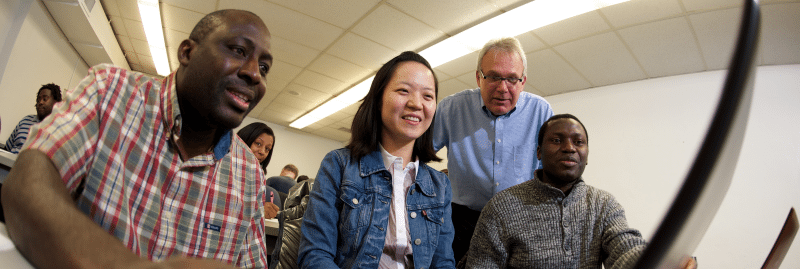
Managing Activities
Your teaching activities influence how your students learn. You can expedite and guide the learning process by infusing “active” in your teaching activities.
Influence of Teaching Activities
If your teaching activities consist of lecture, your students will spend their time listening and taking notes, with the intent of studying these notes outside of class. If your teaching activities include lecture, application activities, and facilitated discussion, your students will spend their time listening, taking notes, interacting with the course material, and discussing key ideas.
Either approach can result in student learning; however, a more active approach expedites learning and allows you to monitor and guide the learning process.
Discussion
One of the most common instructional strategies used in adult education is facilitated discussion. Good discussion:
- Prompts diverse perspectives
- Challenges assumptions
- Sparks new ways of thinking
- Allows for co-creation of knowledge
- Creates a community of learners
Best Practices for Facilitating Discussion
To get the most out of a discussion, you will want to be strategic in how it is facilitated. Here are key strategies to keep in mind.
Plan 4-5 questions in advance.
Create questions in advance that connect to your learning goal. These can be used as prompts for discussion while providing the flexibility for other questions to emerge as needed.
Prepare your students.
Provide your students with the materials they need to know in advance of the discussion. Doing so allows for a more productive discussion because your students will have a common point of reference to consider.
Create consensual ground rules.
Work with your students to create ground rules to support a more equitable and democratic experience. One way is to have them reflect on their worst discussion experience and then determine their preferred ground rules.
Stimulate the desire to participate.
Shape the discussion in a manner that creates relevancy and connection to your students’ experiences.
Promote improved understanding.
Spark new ways of knowing by creating productive dissonance where assumptions are challenged and ambiguity is promoted.
Summarize the discussion.
Take notes along the way, and summarize overarching themes that emerge. Or better yet, delegate this to your students either collectively or in groups.
